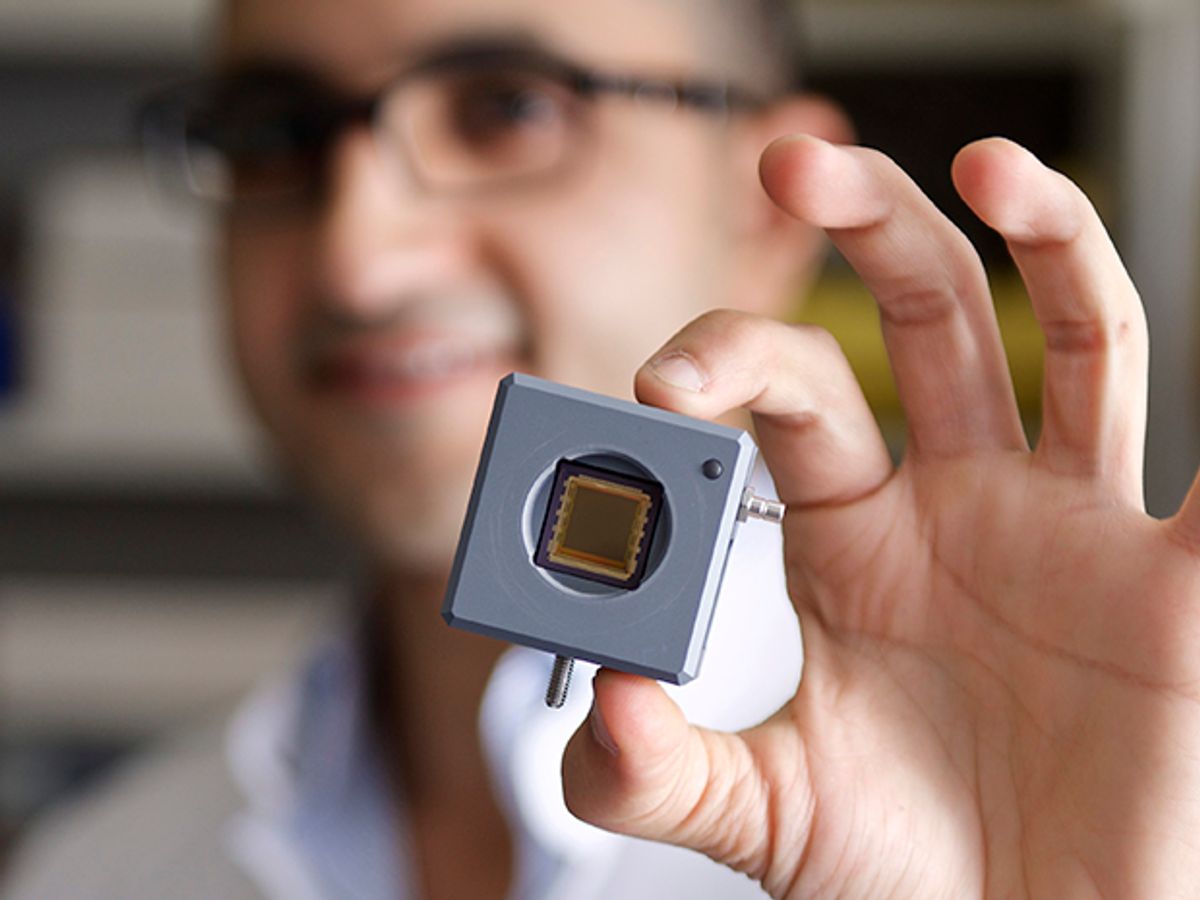Terahertz waves, a frequency band squeezed in between the far infrared and the very short-wave radio frequency region of the electromagnetic spectrum, are not only difficult to create but also difficult to detect. So making a good imager for them is quite a difficult task. Still, in 2012 researchers reported an experimental 1000-pixel CMOS terahertz camera.
The SwissFEL laser team led by Christoph Hauri at the Paul Scherrer Institute near Zurich has now shown that you can use a common megapixel CCD device, as found in electronic cameras or in smartphones, to capture images produced by terahertz waves.
In research published today in Nature Communications, the team describes how with a silicon CCD of 1360 x 1024 pixels they obtained images of THz beams with a resolution that is 25 times better than currently available bolometer-based terahertz imaging systems, and at a fraction of the cost. Microbolometer imagers are two dimensional arrays of metal-and-insulator pixels. The pixels heat up in response to terahertz radiation and change their resistances. However, these arrays are not only slower than CCDs but their pixels are several times larger (24 micrometers instead of 4.65 µm), so microbolomters have worse resolution.
In common CCDs individual photons of visible light liberate individual electrons, a phenomenon known as the internal photoelectric effect. These electrons, have sufficient energy to cross silicon’s band gap, and end up stored in a potential well, from which they can be read out. Terahertz photons, with their longer wavelengths, carry much less energy and the dislodged electrons simply don't make it across the band gap.
"We used kind of an experimental trick, the mode of CCD operation we use is different from the mode of operation at optical frequencies," says Mostafa Shalaby, the lead author of the Nature Communications paper and member of the SwissFEL Laser Group at PSI. It was previously known that low frequency radiation, when intense enough, could lead to dramatic changes in the semiconductor band structure. (For the intense light source they turned to a new and uniquely powerful source the SwissFEL team developed.) Long terahertz wavelengths force electrons to tunnel through the bandgap and the charge carriers start multiplying, leading to huge sensitivity, explains Shalaby.
Although materials with a band gap corresponding to the energy of terahertz photons don't exist, it is clear that any reduction of the band gap would increase the sensitivity. Using a photoactive layer with a smaller band gap would most likely improve the sensitivity of the imaging device, but "it is really hard for us to convince big companies with mass production to fabricate something for us custom," says Carlo Vicario of SwissFEL.
The researchers obtained images by exposing the CCD directly to the terahertz beam. Improving the CCD’s sensitivity, the subject of their immediate research plans, will require much less powerful terahertz lasers, says Vicario. The researchers found that by using 2 to 5 percent of their laser power they could still obtain visible images.
There are a wide range of other improvements possible as well. "If you use CMOS instead of CCD you have a much higher sensitivity,” says Shalaby. “Also with structured metal or metamaterials on top of the substrate one can enhance the sensitivity of the imager." With the first results of this proof of principle the researchers have filed for a patent, and they say they’ve attracted interest from industry, including a CCD manufacturer.



